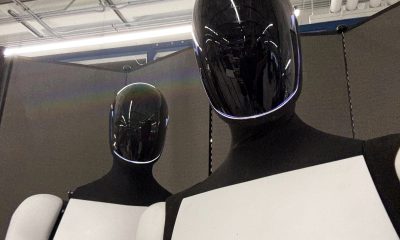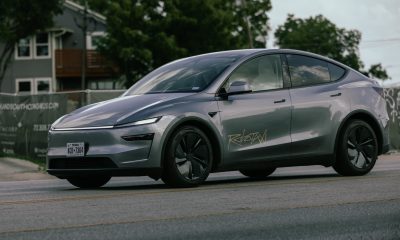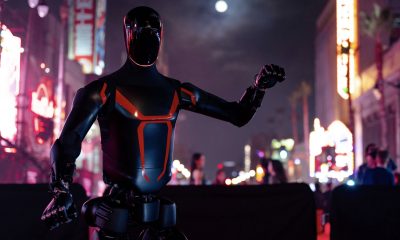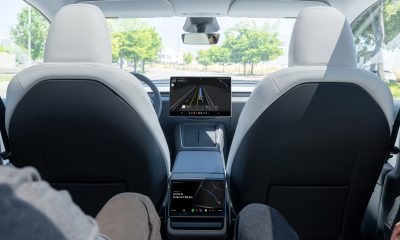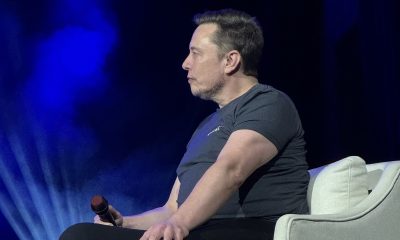News
EV tax credit rule adjustment provides short-term win, but long-term warning
There are broader implications of the credit’s new rules, which could be viewed as an “extension,” although, fundamentally, the credit could mask the true issue that many EV makers will face: generally speaking, electric cars are still too expensive.
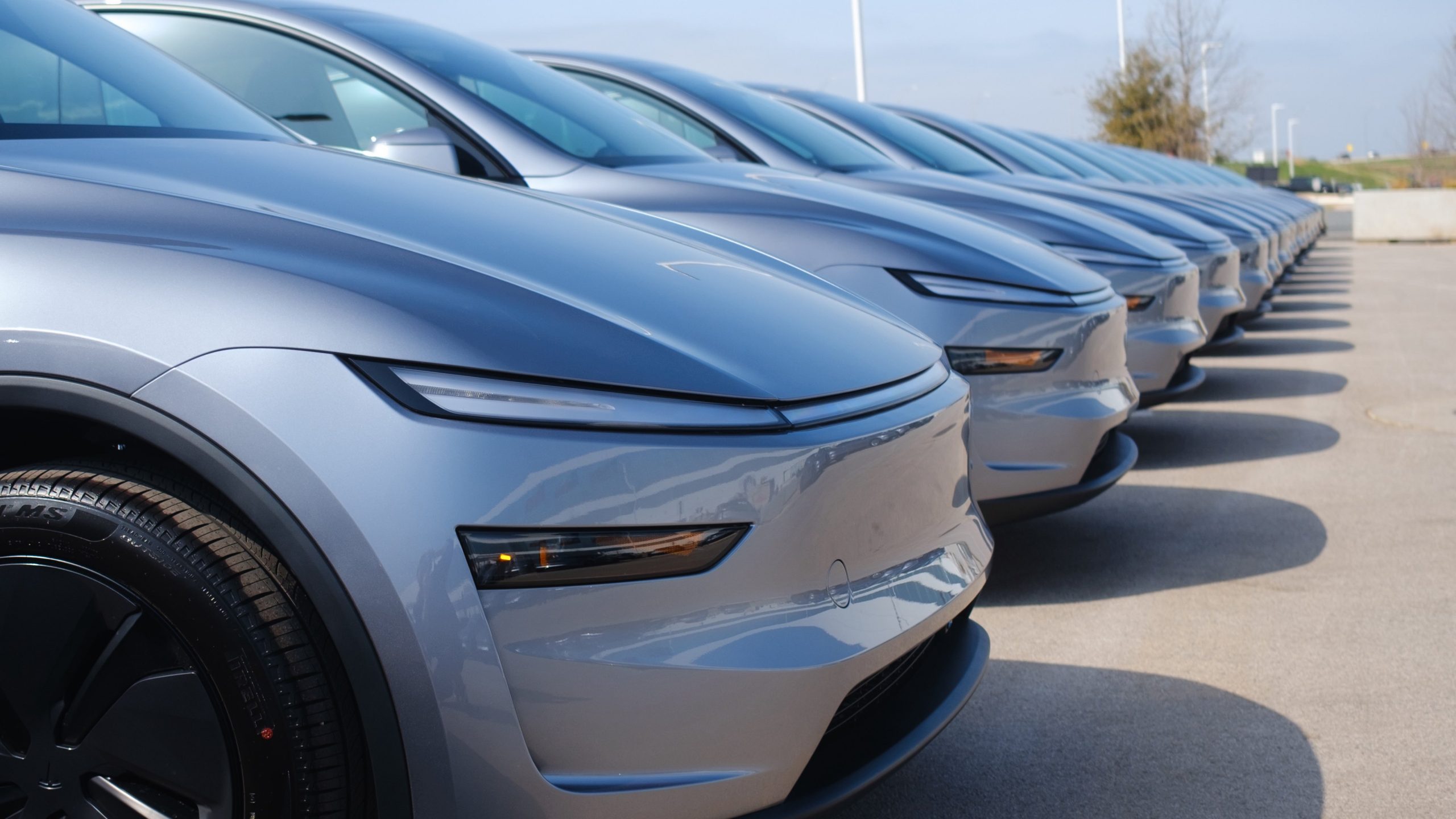
The IRS adjusted the EV tax credit rule last week, which was a big win for consumers. It now allows car buyers to lock up an agreement to buy a vehicle instead of having to take delivery before the deadline of September 30.
This has tremendous advantages for both consumers and companies. For consumers, they are no longer rushed to take delivery of a car that might not be their exact pick just to qualify for the tax credit. Instead, they can build the car they want, make a marginal down payment on it, and still take delivery, even after September 30, and still get the $7,500 off.
For carmakers, they are no longer restricted by production capacity or supply bottlenecks, and can get a vehicle to a buyer after the deadline instead of delivering bad news. The consumer just needs to commit monetarily first.
However, there are broader implications of the credit’s new rules, which could be viewed as an “extension,” although, fundamentally, the credit could mask the true issue that many EV makers will face: generally speaking, electric cars are still too expensive.
Consumer Behavior and Market Dynamics
Everyone is expecting EV makers’ Q3 sales to be slightly higher than normal, as this is the final quarter when the $7,500 EV credit will be available. Buyers are rushing to take advantage of the credit before it expires.
The urgency of car buyers to take advantage of the credit seems to be a positive in the short term. However, there are some indications that this could lead to a “boom-and-bust” cycle, and how EVs sell in subsequent quarters could be a very disappointing reality.
If EVs were at a price point where they were more affordable and people did not need $7,500 off to buy one, we would not be seeing this influx of orders. The fundamental issue with the tax credit is the fact that it is a bit of a crutch for automakers, and that crutch is about to be removed — abruptly.
Sustained incentives for EVs are something that was never going to be available under the Trump Administration. The true demand of EVs will be revealed in Q4, and likely over the first two quarters of 2026.
Policy Instability is a Barrier for Consumers…and Automakers
With the One Big Beautiful Bill that the Trump Administration rolled out, the tax credit’s sunset came abruptly.
Previously, the credit’s termination was set for 2032, but the change, which is absolutely justified in terms of the White House’s powers, sets a tough precedent moving forward: different administrations and different planning for how government funds are spent could dramatically alter plans.
For consumers, their confidence in the stability of these types of programs will be decreased. If a Democrat gets elected in 2028, will the credit return? It’s likely that the credit could become an “On for 4, Off for 4” type of arrangement, depending on the party in the White House, as well as the concentration of that party in the House and Senate.
For automakers, the long-term planning of their supply chains, including whether domestic manufacturing is prioritized and how much capital to allocate toward EVs, becomes a significant question.
If it needs volume to bring down EV prices, the absence of a credit will impact that drastically. Fewer people being able to afford EVs because of their premium prices could put companies in a very strange predicament.
Their roadmaps for their future lineups will be impacted, and they may have to go back to the drawing board for future plans.
Environmental and Economic Stakes
It is important to remember that the EV tax credit was not just a way to make cars more affordable. It was a tool to reduce emissions from passenger transportation. This is the largest source of greenhouse gases in the United States.
Ending the credit risks slowing progress toward climate goals and ceding ground to global competitors, especially China, a global tech hub that has a large population willing to embrace new tech.
Xiaomi CEO congratulates Tesla on first FSD delivery: “We have to continue learning!”
The U.S. needs a stable, long-term strategy to incentivize both consumers and manufacturers to reach climate goals. Short-term band-aids are not going to drive innovation or adoption forward.
Call to Action
To secure a thriving and equitable future for the EV industry, Congress could consider a variety of alternatives that benefit buyers who could use assistance. A tiered incentive program that prioritizes affordability and American innovation would benefit buyers who prefer an EV while making them accessible to lower and middle-income families and buyers.
Higher credits for EVs priced under $40,000 to reach these income levels would be ideal. Additionally, bonuses for vehicles and batteries that are domestically sourced would also encourage car companies to bring manufacturing to the United States, while also helping car buyers lean toward vehicles built here.
The rush to secure credits by consumers proves that incentives work. The United States should be working toward a long-lasting framework that makes EVs accessible to all, while giving the country a competitive edge to compete against powerhouses like China.
Elon Musk
Tesla gains massive vote of confidence on compensation plan for Elon Musk
“”The SBA supported Tesla’s 2018 performance award proposal and reaffirmed that support in the 2024 Tesla shareowner vote. The total return on Tesla’s stock after enactment of its 2018 performance award and the prior history of incentive structured plans leads us to strongly support the proposed 2025 CEO performance award.”
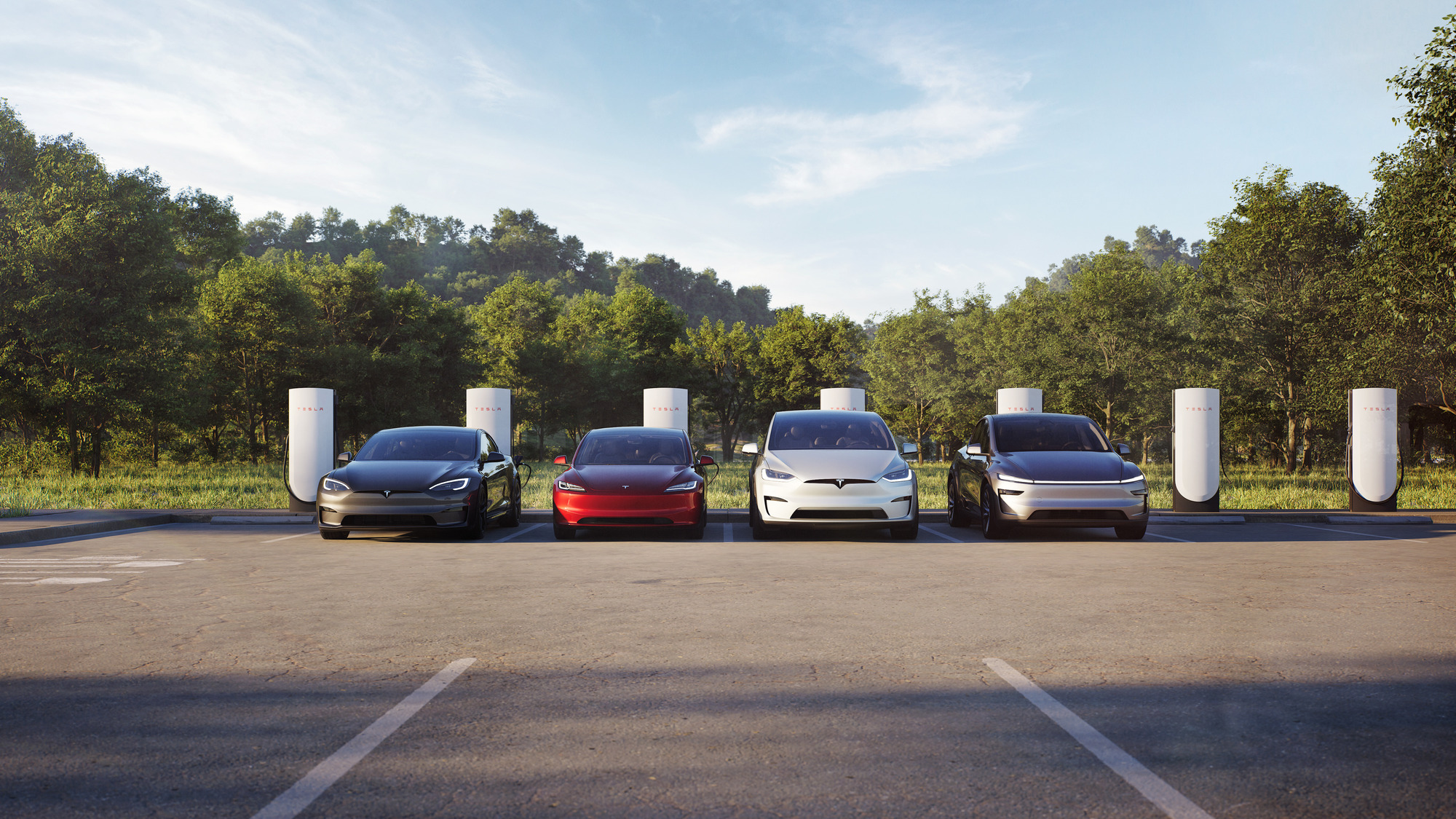
Tesla gained a massive vote of confidence on its proposed $1 trillion compensation plan for CEO Elon Musk from the State Board of Administration of Florida (SBA) on Monday.
On Monday, the SBA submitted a filing to the Securities and Exchange Commission (SEC) stating that it would vote to support Musk’s compensation plan, just as it did with the 2018 performance award and its second vote last year:
“The SBA supported Tesla’s 2018 performance award proposal and reaffirmed that support in the 2024 Tesla shareowner vote. The total return on Tesla’s stock after enactment of its 2018 performance award and the prior history of incentive structured plans leads us to strongly support the proposed 2025 CEO performance award. We believe the proposed award continues to promote an aggressive strategy to align incentives between management and shareowners and focuses solely on pecuniary factors and long-term shareowner value creation.”
This is the first large-scale shareholder that has come out and supported Musk’s potential compensation plan, which was outlined by Tesla and its Board of Directors earlier this month.
Most of the news surrounding Musk’s pay plan has been the opposite of what the SBA said today, as Institutional Shareholder Services (ISS) and Glass Lewis, two proxy firms, said they would be voting against the compensation package.
Tesla Board Chair defends Elon Musk’s pay plan, slams proxy advisors
Musk replied to their vote last week during the Q3 Earnings Call, calling them “corporate terrorists.”
He said:
“I just don’t feel comfortable building a robot army here and then being ousted because of some asinine recommendations from ISS and Glass Lewis, who have no freaking clue. I mean, those guys are corporate terrorists. The problem, yeah. Let me explain, like, the core problem here is that so many of the index funds, passive funds, vote along the lines of whatever Glass Lewis and ISS recommend. They’ve made many terrible recommendations in the past. If those recommendations had been followed, they would have been extremely destructive to the future of the company.”
SBA’s perspective on the plan relies on what Musk has done in the past decade with Tesla, as he has driven company growth, increased shareholder value, and kept the company on track with its lofty and ambitious goals.
It also outlined nine reasons to support Musk’s compensation:
- Pure Pay for Performance Design – Entirely Performance-Based, aligns with Shareowners
- Size of the Award and Share Count – Performance-based allocation, dilution tied to value creation, structured milestone design
- Market Capitalization Milestones – Clear, tiered targets, sustained performance requirement, shareholder value focus
- Operational/Product Milestones – Clear, quantifiable goals, strategic product focus, financial discipline, multi-quarter evaluation windows
- Vesting/Holding Periods – Long-term vesting structure, mandatory holding period, continuous service requirement
- CEO Succession – Succession planning requirement, performance integrity safeguard
- Time Horizon and Duration – Extended performance window of 10 years, no intermediate vesting
- Dilution & Voting Power Implications – Potential for significant ownership increase, permanent dilution
- Ambition and Stretch Goals – Extraordinary Scale of Growth, Shareowner value focus
Shareholders will vote on Musk’s compensation package on November 6 at the annual Shareholder Meeting.
News
Tesla Optimus gets its latest job, and it’s not in the company’s factories
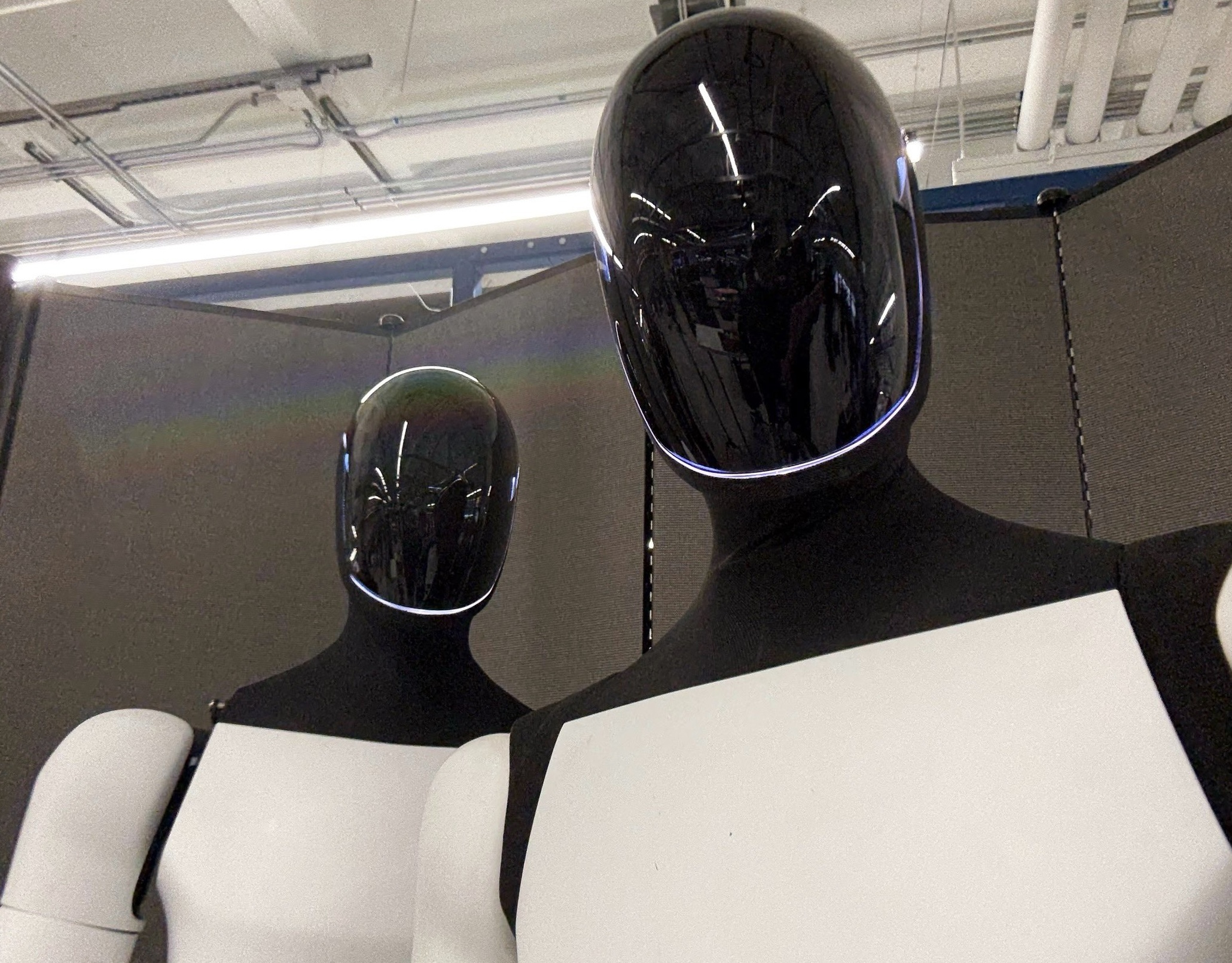
Tesla Optimus was spotted in its latest job placement, not at any of the company’s manufacturing or production facilities.
Optimus was instead spotted in New York City at Times Square, handing out Halloween candy to people:
Just saw Optimus in Times Square handing out candy to people! Pretty cool $tsla pic.twitter.com/Eg5Q8KH17H
— Will Coggins (@Patient_Profits) October 27, 2025
It is not Tesla Optimus’s first gig in the service industry, as it has already secured several employment opportunities through the company’s projects. Last year, it served drinks at the company’s We, Robot day, where the Cybercab and Robovan were unveiled.
Additionally, Optimus has been helping out at the Tesla Diner in Los Angeles, serving popcorn and greeting guests.
Elon Musk reveals big plans for Tesla Optimus at the Supercharger Diner
Optimus has many capabilities, and its applications can benefit both residential and commercial users. It is designed to be an at-home assistant, helping with tedious, monotonous tasks around the house.
In a commercial setting, Optimus will be programmed to handle everything from manufacturing to other factory-type tasks, as Tesla has already been using the robot in its own factories for smaller jobs.
Optimus has been in development for several years, but Tesla is ready to turn up the heat in terms of its capabilities and engineering as it prepares to launch it to a wider audience in the coming years.
During the recent Q3 Earnings Call, Tesla CEO Elon Musk gave updates on the Optimus project, highlighting its progress and the company’s current development status.
Musk said that Tesla is “on the cusp of something really tremendous with Optimus, which I think is likely to be, has the potential to be, the biggest product of all time.” He also mentioned that Tesla is in an interesting position because not only has it established itself as one of the biggest car companies in the country, but it’s the only company that manufactures vehicles and has a monumental grasp of the importance of AI and robotics.
“I’m unaware of any robot program by Ford or GM or, you know, by U.S. car companies,” he said.
Musk added that Optimus has some pretty big responsibilities around Tesla’s factories:
“I mean, bringing Optimus to market is an incredibly difficult task, to be clear. It’s not like some walk in the park. At some point, I mean, actually, technically, Optimus can walk in the park right now. We do have Optimus robots that walk around our offices at our engineering headquarters in Palo Alto, California, basically twenty-four hours a day, seven days a week.”
Right now, it appears Tesla is having its biggest challenge with the Optimus project around the development of its hands and forearms, which Musk called “an incredible thing” on the human body:
“The human hand is an incredible thing. The more you study the human hand, the more incredible you realize it is, and why you need four fingers and a thumb, why the fingers have certain degrees of freedom, why the various muscles are of different strengths, and fingers are of different lengths. It turns out that those are all there for a reason…Making the hand and forearm, because most of the actuators, just like the human hand, the muscles that control your hand are actually primarily in your forearm. The Optimus hand and forearm are an incredibly difficult engineering challenge. I’d say it’s more difficult than the rest of the robot from an electromechanical standpoint.”
Tesla is stumped on how to engineer this Optimus part, but they’re close
Optimus is starting to get more visibility in the public, and Tesla’s move to put it smack dab in the middle of New York City is one that will certainly bring some additional eyes to its development.
Investor's Corner
Tesla analysts are expecting big things from the stock

Tesla analysts are expecting big things from the stock (NASDAQ: TSLA) after many firms made price target adjustments following the Q3 Earnings Call.
Last Wednesday, Tesla reported earnings with record revenue but missed EPS estimates.
It blew delivery expectations out of the water with its strongest quarter in company history, but Tesla’s future relies on the development of autonomous vehicles, robotics, and AI, which many bullish firms highlight as major strengths.
The earnings call reiterated those points, along with the belief that Tesla CEO Elon Musk should be rewarded with a newly proposed pay package that would enable him to gain $1 trillion in wealth if he comes through on a lengthy list of performance tranches.
Nine Wall Street firms made adjustments to their outlook on Tesla shares in the form of price target increases since last Wednesday’s call, all of which are indications of big expectations for the stock moving forward.
Here are the nine firms that made moves:
- Truist – $280 to $406, reiterated Hold rating
- Roth MKM – $395 to $404, reiterated Buy rating
- Cantor Fitzgerald – $355 to $510, reiterated Overweight rating
- Deutsche Bank – $435 to $440, reiterated Buy rating
- Mizhuo – $450 to $485, reiterated Outperform rating
- New Street Research – $465 to $520, reiterated Buy rating
- Evercore ISI – $235 to $300, reiterated In Line rating
- Freedom Capital Markets – $338 to $406, upgraded to Hold rating
- China Renaissance – $349 to $380, reiterated Hold rating
The boosts in price target are largely due to Tesla’s future projects, as Roth MKM, Cantor Fitzgerald, Mizuho, New Street Research, and Evercore ISI all explicitly mention Tesla’s autonomy, robotics, and AI potential as the main factors for its price target boosts.
Cantor Fitzgerald raises Tesla PT To $510, citing Cybercab, Semi, and AI momentum
It is no surprise that many firms are adjusting their outlook on Tesla shares considerably in an effort to prepare for the company’s transition to even more of a tech company than a car company.
The issue with many analysts is that they treat the company’s vehicle deliveries as the main indicator of value.
However, Tesla has a robust energy division, which was a major contributor to the company’s strong margins and gross profit in Q3, as well as its prowess in robotics and AI.
Additionally, the company is seen as a key player in the autonomy field, especially after launching driverless rides on a Robotaxi platform in Austin and expanding a similar program in the Bay Area.
Tesla shares were up over 5 percent at 12:18 p.m. on the East Coast.
-

 Elon Musk1 week ago
Elon Musk1 week agoSpaceX posts Starship booster feat that’s so nutty, it doesn’t even look real
-

 Elon Musk1 week ago
Elon Musk1 week agoTesla Full Self-Driving gets an offer to be insured for ‘almost free’
-

 News1 week ago
News1 week agoElon Musk confirms Tesla FSD V14.2 will see widespread rollout
-

 News1 week ago
News1 week agoTesla is adding an interesting feature to its centerscreen in a coming update
-

 News2 weeks ago
News2 weeks agoTesla launches new interior option for Model Y
-

 News2 weeks ago
News2 weeks agoTesla widens rollout of new Full Self-Driving suite to more owners
-

 Elon Musk1 week ago
Elon Musk1 week agoTesla CEO Elon Musk’s $1 trillion pay package hits first adversity from proxy firm
-

 News1 week ago
News1 week agoTesla might be doing away with a long-included feature with its vehicles


